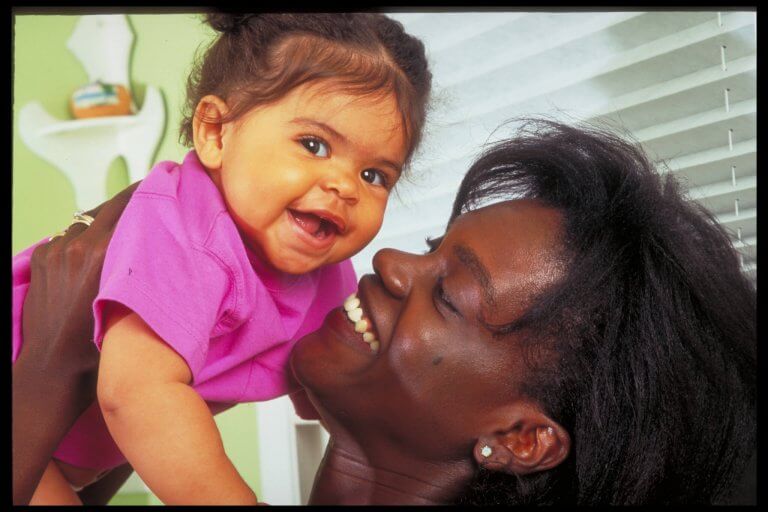Module 8
Health and Development in the Early Years

The early years (ages 0-5) are a time of rapid growth and development. Creating the best possible environment for children to develop is important and a responsibility we have as a society to ensure strong and healthy children grow into healthy adults. Prenatal exposure to positive or negative influences could impact birth outcomes, which is why education and care for pregnant mothers is so important. Where young children grow up makes a difference too; children with access to healthy food, physical activity, quality education, health care and positive parenting tend to be healthier and better equipped for the challenges they face growing up. The following module describes Canadian children aged 0-5 and their families including who their parents are, where they live, socio-economic issues they face, family structures they are part of, community supports and challenges, health services they can access, the impact of the environment on their health and developmental outcomes. Creating a healthy, positive start for every Canadian child needs to become a priority: an investment in children is an investment in the future.
The content for this module was produced for the Public Health Agency of Canada by the Canadian Institute for Child Health in collaboration with the Canadian Council on Social Determinants of Health. The views expressed herein do not necessarily represent the views of the Public Health Agency of Canada.

Early Childhood Partnership Tool
![]()
Go to the Early Childhood Partnership Tool (opens in new tab)
By answering 4 easy questions, this tool will provide you with a customized summary of data, information, resources, and links as well as ideas on how to create partnerships that will increase your impact on the overall health and well-being of young children and their families.
Health and Development in the Early Years
Innovative Examples
This section provides some innovative examples of programs and interventions that groups and organizations have developed based on data and research. It is hoped that these examples, along with the supporting information found in this module, will provide inspiration for the further creation of initiatives to improve the lives of children in Canada.
Suggested Citation and Contributors
The Co-Chairs wish to thank the Expert Advisory Committee and all of the key informants for their time and advice.
Section 1
Section 1: Contextual/Demographic Information
The following section provides information on the number of Canadian girls and boys aged 0-5, where they live and who their parents are. Life expectancy at birth, fertility rates and projected population growth are also presented.
1.1 Section 1.1: Births in Canada
1.2 Section 1.2: Fertility
1.3 Section 1.3: Canadian Children Age 0 to 5
1.4 Section 1.4: Family Structure - Canadian Children Aged 0 to 5
1.5 Section 1.5: Population Projections and Life Expectancy
1.6 Consolidated Results
Section 2
Section 2: Income and Labour Market Characteristics of Families
The following section presents information on the income and labour market characteristics of families of children aged 0-5 living in Canada. Household income and parental income is presented as well as parental employment and access to housing. Child poverty and food security issues for young children are presented as well as access to income assistance programs.
2.1 Section 2.1: Income - Parents and Families
2.2 Section 2.2: Labour Force Participation and Education - Parents
2.3 Section 2.3: Core Housing Need and Homelessness
2.4 Section 2.4 Food Insecurity and Poverty
2.5 Section 2.5: Social Assistance and Child Benefits
2.6 Consolidated Results
Section 3
Section 3: Family Context
This section presents information on the family context in which Canadian children aged 0-5 live. Parental age, education level and health are provided as well as prevalence of parental behaviours that impact children such as smoking rates, folic acid use and breastfeeding initiation. Parenting styles are also presented including information on how many parents read to children, attitudes on spanking and injury prevention behaviours. The number of children in care is also covered in this section as well as social supports available to Canadian families.
3.1 Section 3.1: Family
3.2 Section 3.2: Maternal Health
3.3 Section 3.3 Maternal Behaviours
3.4 Section 3.4: Parenting and Family Functioning
3.5 Section 3.5: Family Violence and Child Welfare
3.5.4
Victims of police-reported violent crime, by relationship of the accused to the victim, Canada, 20143.5.7
Child Welfare in Canada3.6 Consolidated Results
Section 4
Section 4: Community Context
The following section provides information on the kinds of communities Canadian children 0-5 grow up in. Access to parks and recreation, early childhood education programs, pre-school, kindergarten and quality child care is provided. Community safety is also presented including neighbourhood safety, home safety and crime rates.
4.1 Section 4.1: Recreation and Green Space
4.2 Section 4.2: Education and Child Care
4.3 Section 4.3: Community Safety and Cohesion
4.4 Consolidated Results
Section 5
Section 5: Health Services
The following section provides information on health services available to pregnant mothers and children 0-5 in Canada. Access to pre-natal, post-natal, oral health care is presented as well as access to doctors, nurses and other health professionals. The utilization of health services is also presented including dental visits, immunization rates, vision screening, hearing screening and genetic services.
5.1 Section 5.1: Utilization of Prenatal Care
5.2 Section 5.2: Utilization of Postnatal Care
5.3 Section 5.3: Access to Health Professionals
5.4 Section 5.4: Access to Screening
5.5 Section 5.5: Dental Services
5.6 Section 5.6: Genetic Services
5.7 Section 5.7: Immunization
5.8 Consolidated Results
Section 6
Section 6: Environmental Risks/Conditions
The following section examines environmental risks and conditions impacting Canadian children aged 0-5 and their families. Information on exposures to environmental toxins such as lead, mercury, phthalates, tobacco smoke and UV radiation are provided. Air and water issues are presented including the presence of mould, indoor and outdoor air pollution, water quality and asthma incidence. The impact of climate change, related greenhouse gas emissions and their impacts on future generations is also presented.
6.1 Section 6.1: Health and Environment - An Overview
6.2 Section 6.2: Environmental Toxins
6.3 Section 6.3: Air and Water Quality
6.4 Section 6.4: Climate Change
6.5 Section 6.5: Contact With Nature
6.6 Section 6.6: Health Impacts
6.7 Consolidated Results
Section 7
Section 7: Health Outcomes
The following section provides information on health outcomes impacting Canadian children aged 0-5. Birth outcomes and mortality rates are provided as well as leading causes of hospitalization. Risk and preventative information such as injury prevalence, physical activity rates and screen time are presented. Physical and mental health outcomes are also provided including information on cancer and diabetes incidence, allergy and asthma prevalence, autism, anxiety and hyperactivity.
7.1 Section 7.1: Birth Outcomes
7.1.13
Rate of neural tube defects, Canada and the provinces/territories, (excluding Québec)*, 2001 to 20107.1.14
Congenital Heart Defects7.2 Section 7.2: Mortality
7.3 Section 7.3: Hospitalizations
7.4 Section 7.4: Injury - Prevalence and Prevention
7.5 Section 7.5: Physical Activity and Screen Time
7.6 Section 7.6: Physical Health Outcomes
7.7 Section 7.7: Mental Health Outcomes
7.8 Consolidated Results
Section 8
Section 8: Developmental Outcomes
The following section provides information on developmental indicators for Canadian children aged 0-5. Information on the EDI (Early Development Instrument) is provided including scores for: physical health and well-being; emotional maturity; language and cognitive development; communication and general knowledge; and social competence. Additional development measures are also presented including vocabulary, number knowledge, empathy, literacy and school readiness.
8.1 Section 8.1: Early Child Development
8.2 Section 8.2: Early Development Instrument (EDI)
8.3 Section 8.3: School Readiness
8.4 Consolidated Results
asdfasdfasdf







